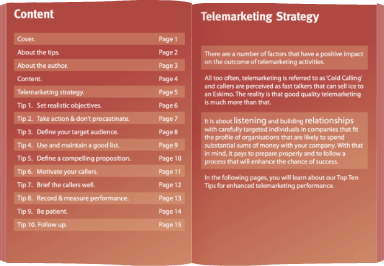I had a conversation with a prospect recently. They need help with lead generation. We spoke about the level of activity their internal team had been putting into business development. The client told me that they had ‘exhausted’ their primary sector audience with emails and LinkedIn sponsored advertising and didn’t know what to do next.
He advised that the account managers were very ‘active’ on LinkedIn. They were also regularly in contact with potential clients and he didn’t want to overdo it.
Are Internal Teams Active Enough?
What was enlightening was that when questioned about the depth, breadth and degree of activity, he was less clear. His knowledge was more shaky. The more questions I asked, the more it became obvious that he didn’t actually know how much activity had taken place. He was also unsure as to what actually might constitute ‘overdoing’ the amount of contact. What’s more, the approach to deciding which target audiences to engage with, how often and when was also a bit foggy.
In fact, it appeared that there was far less activity than he thought and much less than needed in order to drive growth.
It’s about Priorities
It wasn’t that his internal sales team was lazy. They were active. Typically, though, they were busy with clients that were of highest value and with those prospects that were the best chance of turning into paying clients.
However due to workload, they weren’t able to reach out regularly to smaller clients with potential, and lapsed clients for resuscitation. They weren’t able to follow-up past prospects that requested contact at a later date. And, they were definitely unable to dedicate anywhere near enough time to proactive prospecting.
Business Development Efforts are Often Half-Hearted
The reality is that, often, the level of business development activity is insufficient in the first place, and it stops too early. There is a lack of persistence and many sales people, that are not tasked with pre-sales, and with filling the top of the funnel, give up too soon and lack follow-through.
That may not be their fault since businesses have differing priorities. If only prospects responded first-time, every time. Sadly, that’s just not the real world. Decision-makers are busy. They have issues that absorb their time. Incumbent suppliers and alternative solutions are commonplace. There are budget considerations. Sometimes multiple decision-makers mean committee-based decision-making that slows things down. They are, sometimes, resistant to change the status quo. Check out this video about why customers don’t buy from you.
As a result, sales teams can spread themselves too thinly to be effective in any one area.
Focus is Essential
Ultimately, sales people can be pulled in lots of directions. Working out which target audiences are likely to provide the best bang for buck is crucial. It could be that there are opportunities aplenty with current customers e.g. other decision-makers, departments, sites and even locations. It may be that cross-sell and upsell solutions are the best business growth options for your business as opposed to fresh prospecting.
You may be running events that generate leads to follow-up. Equally, advertising and social media content distribution can drive inbound leads that need to be profiled and triaged for qualification. And, focusing on specific industries, job roles and market triggers (such as new legislation) can provide great clarity for lead generation.
Whether you decide to use internal resources or an outside agency like GSA, focus is essential. That allows you to put the right amount of energy and activity into your prospecting to reduce the risk of failure.
Prospecting is a Discipline
Good systems are the engine for business development. Nurturing is everything since prospects aren’t all ready to buy and they’re not all beating a path to your door. But, a random call, and an email here and there, is simply insufficient. What’s more, when you’re prospecting in large organisations, the pool is big. There could be several points of entry.
With that in mind, how frequently do you need to ‘attempt’ to make contact with your key targets? And, what channels should you use? Ultimately, there’s no right answer here. It depends. However, you won’t turn into a stalker and you won’t exhaust your market, especially when targeting large organisations with multiple target decision-makers, if you make regular calls, send emails and try to engage on LinkedIn.
Multi-channel Targeting is Important
You can reach your audience through a variety of channels. Aside from those above, there are also events, exhibitions, webinars, sponsored ads, and many other routes. Everything depends on your budget of course.
I have said many times though that high-quality lead generation is a marathon not a sprint. At least, it’s a 3000m steeplechase as opposed to the 100 metres. Buyers of high-value products and services rarely take buying decisions lightly and rarely make them frequently or quickly. Therefore, it’s a case of keeping visible in advance of the time that they do want to change. So, you need to make sure that you keep in touch.
Persistence is the Only Answer
If you think of it simply, your buyers are busy. They only have one budget that they need to allocate wisely. They have competing priorities. They have trusted suppliers. There are lots of other considerations. Despite the advent of digital marketing and social media, which has to some extent become saturated, a multi-touchpoint approach is likely to be the key. That means online and offline.
Clearly, the bigger your company, the more resources you’ll have at your disposal. You may have the bandwidth to attend events, run webinars, and set-up round-tables. You may publish white papers and thought pieces, and advertise where your audience can spot your presence. You may be able to do all of this at the same time. You may have a large internal inside sales team or engage the services of an agency. However, smaller businesses don’t have that luxury. They usually need to place concerted effort on a few initiatives.
The Best Approach to Take
There is most certainly not one size that fits all here. Every business is different and buyers vary. Therefore, there is no single answer or recipe for success. Whatever your approach, make sure you consider the following:
- Segment and profile your targets – consider the various audiences and how you will engage with them.
- Build a plan by audience – perhaps lapsed clients simply need an email or a call. Current clients will potentially need a customer care call for the personal touch. Prospects may engage with knowledge-based content online.
- Decide which methods to use – different roles respond differently to marketing so work out whether to focus on driving inbound leads through advertising and social, or direct outreach using LinkedIn and/or telemarketing or some other approach.
- Be consistent – you need enough input to be able to assess whether your outreach is working so give your activities time to work.
- Measure the results – flogging a dead horse is never a good idea but consider the value and frequency of sale to best judge the likely ROI.
- Be persistent – your dream clients probably need a more persistent line of attack and concerted effort. So, don’t dabble and don’t give up.
Salespeople are rarely idle. They usually have a lot on their plate. Extra support may be needed to ensure that your business maximises opportunities and reaches its primary target audiences. Whatever route or method you choose, make sure that it isn’t half-hearted.






